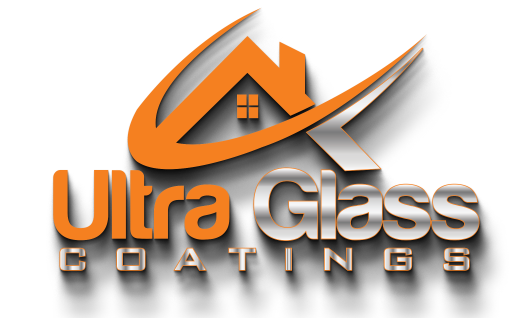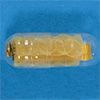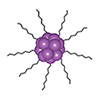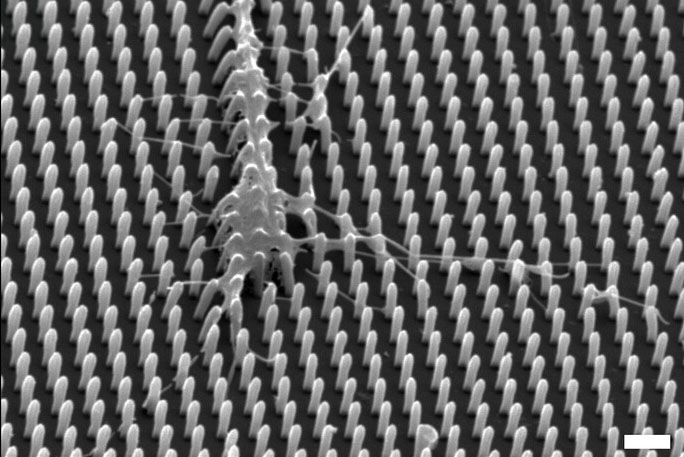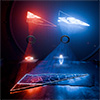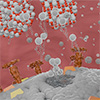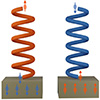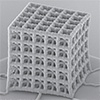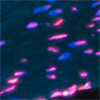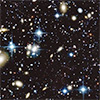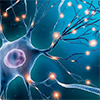Jan 31, 2025 (Nanowerk Spotlight) Inside the human digestive tract, an electronic capsule can now generate its own electricity using recycled seaweed, power small electronic devices, with the duration depending on the specific energy requirements of each device, kill harmful bacteria through electrical pulses, and then breaks down into fragments...
Light-twisting materials created from nano semiconductors
Jan 31, 2025 (Nanowerk News) Cornell scientists have developed a novel technique to transform symmetrical semiconductor particles into intricately twisted, spiral structures – or “chiral” materials – producing films with extraordinary light-bending properties. The discovery, detailed in a paper in the journal Science ("Transforming achiral semiconductors into chiral domains with...
3D-printed nanopillars promote neuron growth
Jan 30, 2025 (Nanowerk News) Key cells in the brain, neurons, form networks by exchanging signals, enabling the brain to learn and adapt at incredible speed. Researchers of the University of Technology in Delft (TU Delft) have developed a 3D-printed ‘brain-like environment’ where neurons grow similarly to a real brain....
A look into the dark
Jan 30, 2025 (Nanowerk News) How can the latest technology, such as solar cells, be improved? An international research team led by the University of Göttingen is helping to find answers to questions like this with a new technique. For the first time, the formation of tiny, difficult-to-detect particles –...
Nanoparticles damage coronavirus in an unexpected way, paving the way for new disinfection technology
Jan 30, 2025 (Nanowerk News) A new way to neutralise the coronavirus and other membrane-surrounded viruses has been discovered by researchers from the Swedish University of Agricultural Sciences and the University of Tartu. Certain mineral nanoparticles were found to damage the membrane of the virus, making it less able to...
A spintronic view of the effect of chiral molecules
Jan 30, 2025 (Nanowerk News) The role of electrons and their negative charge in electric current is well established. Electrons also exhibit other intrinsic properties that are associated, for example, with considerable potential for enhancing data storage devices: the electron's spin or magnetic moment. To date, however, the selection of...
Carbon nanostructures rival steel in strength at 1% of the weight
Jan 30, 2025 (Nanowerk Spotlight) A carbon structure lighter than a postage stamp holds two full-sized bricks aloft without buckling, while remaining so delicate it balances on a soap bubble without breaking the film. This achievement from University of Toronto engineers demonstrates materials that match the compressive strength of carbon...
Nanotech drug delivery shows lasting benefits, reducing need for repeat surgeries
Jan 30, 2025 (Nanowerk News) A nanotechnology-based drug delivery system developed at UVA Health to save patients from repeated surgeries has proved to have unexpectedly long-lasting benefits in lab tests – a promising sign for its potential to help human patients. The approach would allow surgeons to apply a paste...
A less ‘clumpy’, more complex universe?
Jan 30, 2025 (Nanowerk News) Across cosmic history, powerful forces have acted on matter, reshaping the universe into an increasingly complex web of structures. Now, new research led by Joshua Kim and Mathew Madhavacheril at the University of Pennsylvania and their collaborators at Lawrence Berkeley National Laboratory suggests our universe...
Scientists ‘mimic real biological processes’ using synthetic neurons
Jan 30, 2025 (Nanowerk News) Artificially engineered biological processes, such as perception systems, remain an elusive target for organic electronics experts due to the reliance of human senses on an adaptive network of sensory neurons, which communicate by firing in response to environmental stimuli. A new collaboration between Northwestern University...
